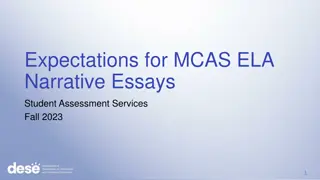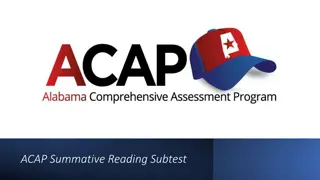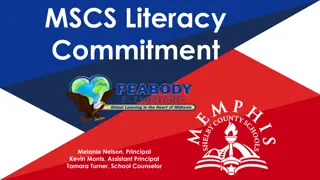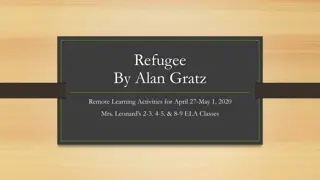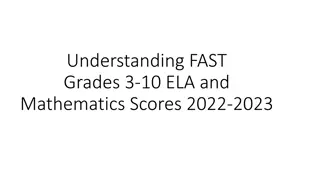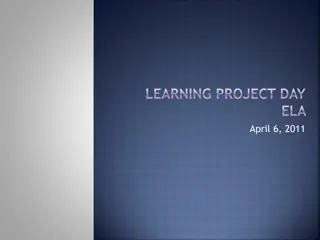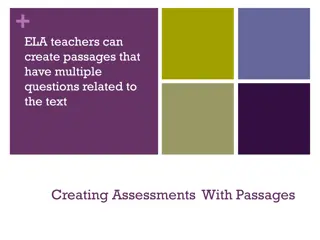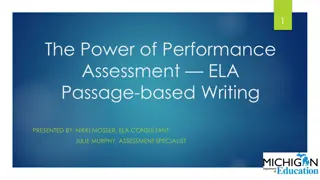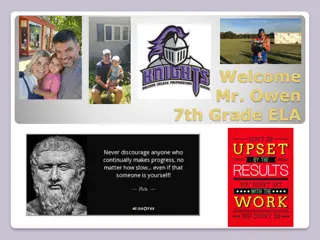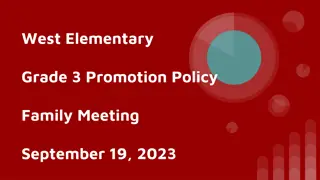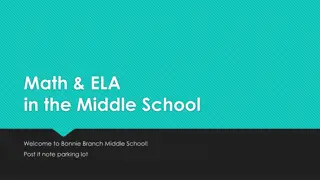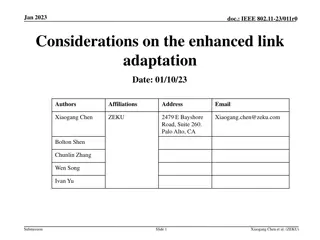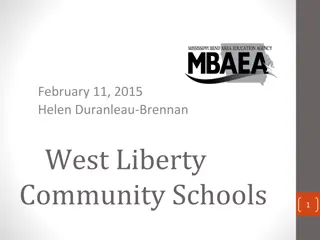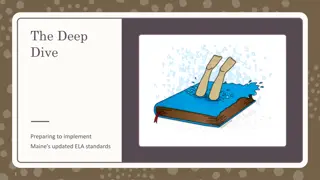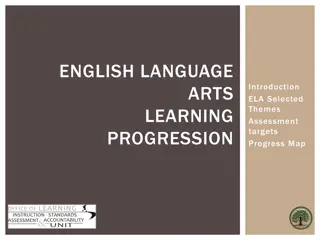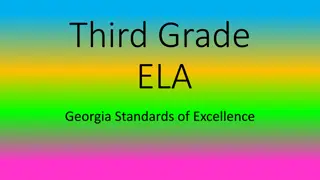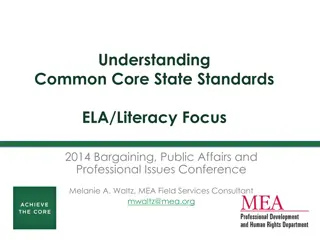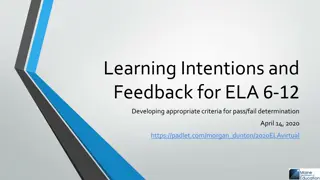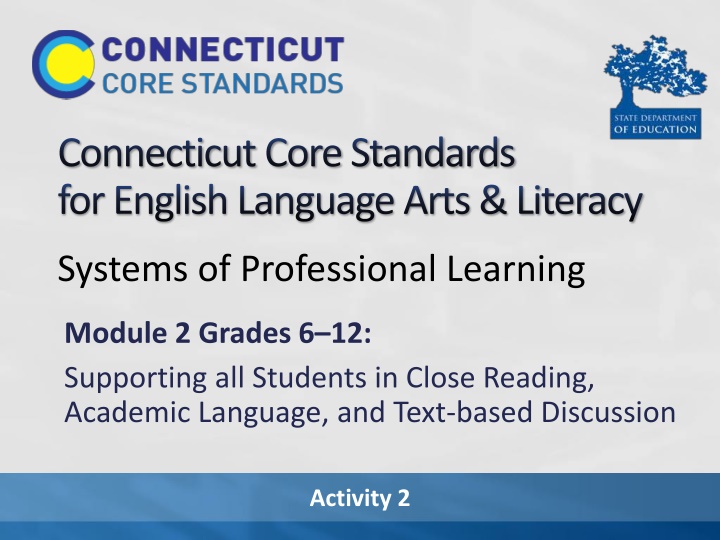
Supporting Students in Close Reading and Academic Language in CCS-Aligned Units
Explore the framework for designing CCS-aligned units, focusing on close reading, academic language, and text-based discussions. Learn about backward design, setting learning goals, and creating evidence to validate learning outcomes.
Download Presentation

Please find below an Image/Link to download the presentation.
The content on the website is provided AS IS for your information and personal use only. It may not be sold, licensed, or shared on other websites without obtaining consent from the author. If you encounter any issues during the download, it is possible that the publisher has removed the file from their server.
You are allowed to download the files provided on this website for personal or commercial use, subject to the condition that they are used lawfully. All files are the property of their respective owners.
The content on the website is provided AS IS for your information and personal use only. It may not be sold, licensed, or shared on other websites without obtaining consent from the author.
E N D
Presentation Transcript
Connecticut Core Standards for English Language Arts & Literacy Systems of Professional Learning Module 2 Grades 6 12: Supporting all Students in Close Reading, Academic Language, and Text-based Discussion Activity 2
Todays Session CCS-ELA & Literacy Successes and Challenges Design of CCS-aligned Units Close Reading, Text-dependent Questions, and Academic Language Classroom Discussion Universal Design for Learning Activity 2 14
Part 2 Exemplary Unit Design 15
CCS-Aligned Units and Lessons Design learning goals and assessments before lessons Derive learning goals directly from CCS Use appropriately complex text Embed formative assessment practices Build toward performance assessments Include close reading, academic vocabulary, and collaborative protocols Consider the learning needs of all students Activity 2 16
Backward Design: Begin with the End in Mind What do we want students to understand, know, and be able to do? What will be the evidence that they have accomplished this? What learning activities will lead to the desired outcomes? Activity 2 17
Stage 1 Learning Goals Common Core Standards, Content Standards, and Other Established Goals Transfer Goals (CCR) Meaning Goals (Understandings and Essential Questions) Acquisition Goals (Knowledge and Skills) Activity 2 18
Stage 2 Evidence Directly reflects goals identified in Stage 1 Elicits evidence to validate that the targeted learning has been achieved Sharpens and focuses teaching Performance tasks: Students apply learning to a new and authentic situation to assess their understanding and ability to transfer their learning Other evidence: Assessments of discrete knowledge and skills Activity 2 19
Stage 3 Instructional Activities Instructional activities are designed after identifying desired knowledge, skills, and understanding, and determining acceptable evidence toward those goals Formative assessment practices are part of lesson design to check for student understanding and progress toward desired goals Activities are differentiated to ensure that all students will reach the desired outcomes Activity 2 20
Activity 2a: Reviewing an Exemplar Unit Activity 2a: Scanning a Unit for Backward Design 1. Choose one of the three exemplar units provided. 2. Work in pairs with someone who has chosen the same unit. 3. Review for evidence of the three stages of backward design. 4. Annotate the unit with post-it notes as directed. Page 10 Activity 2 21
Annotations and Look-fors Stage 1 Learning Goals: Connecticut Core Standards (CCS) Understandings (U) and key/essential/guiding Questions (Q) Declarative and Factual Knowledge and Skills (KS) Stage 2 Evidence: Performance Assessment (PA) Other Assessment (OA) Stage 3 Instructional Activities: Review one lesson for evidence that the Learning Goals are being addressed in the lesson (LG) Activity 2 22
Zooming in on a Lesson Content-rich text Targeted set of standards Close reading and Text-dependent Questions Academic vocabulary Discussion Formative assessment Student supports Activity 2 23
Formative Assessment Formative assessment is a process used by teachers and students during instruction that provides feedback to adjust ongoing teaching and learning to improve students achievements of intended instructional outcomes (FAST SCASS, October 2006). As can be seen, formative assessment is a process, not a thing. http://www.ccsso.org/Documents/FASTLabels.pdf Activity 2 24
Activity 2b: Reviewing an Exemplar Unit Activity 2b: Looking Closely at a Lesson 1. Work in pairs with the same person as in Activity 2a. 2. Focus on one lesson in the unit you chose, making sure that it is a text-based lesson. 3. Annotate the lesson with post-it notes as directed on the next slide. Page 12 Activity 2 25
Annotations and Look-Fors Content-rich Text (T) Targeted set of Standards (CCS) Close Reading and Text-dependent Questions (TDQ) Academic Vocabulary and Language (AL) Discussion (D) Formative Assessment (FA) Student Supports (SS) Activity 2 26
Compare Units and Lessons Join a set of partners who reviewed a different unit. Share evidence of the elements of backward design that you found in your units. Share elements of text-based lesson design in your lessons. Discuss questions or concerns that arose as you were reviewing your units and lessons. Activity 2 27
Quick Write Use the Quick Write section of the notepad in your Participant Guide. In the section labeled Reviewing a Unit and a Lesson, jot down notes about anything you think was significant from this activity that can be applied to Core Standards work in your school or district. Page 61 Activity 2 28
Sample Unit Template Grade, Unit #, and Title Unit Overview CT Core Standards Core Understandings and Essential Questions Knowledge and Skills Assessments Vocabulary Resources Supports Page 85 Activity 2 29
Sample Lesson Plan Template Unit and Lesson Title CT Core Standards Learning Targets (Knowledge and Skills/ Guiding Questions) Sequence and Materials Opening, Work Time, Closing, and Assessments Meeting Students Needs Page 89 Activity 2 30

